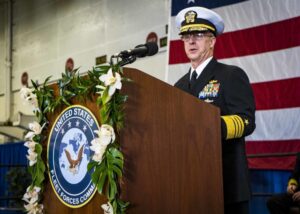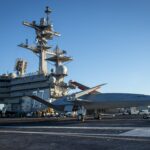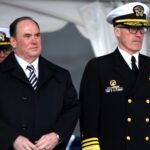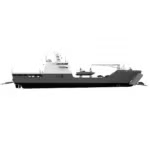
Adm. Daryl Caudle relieved Adm. Chris Grady as commander of U.S. Fleet Forces Command (USFFC) in a ceremony on Dec. 7 aboard the aircraft carrier USS George H. W. Bush (CVN 77) at Naval Station Norfolk, Va. Last month, President Biden nominated Grady to serve as the next vice chairman of the Joint Chiefs of Staff. He served as commander of Fleet Forces since May 2018 (Defense Daily, Nov. 2). Grady also assumed the duties of commander of U.S. Naval…

 By
By 











